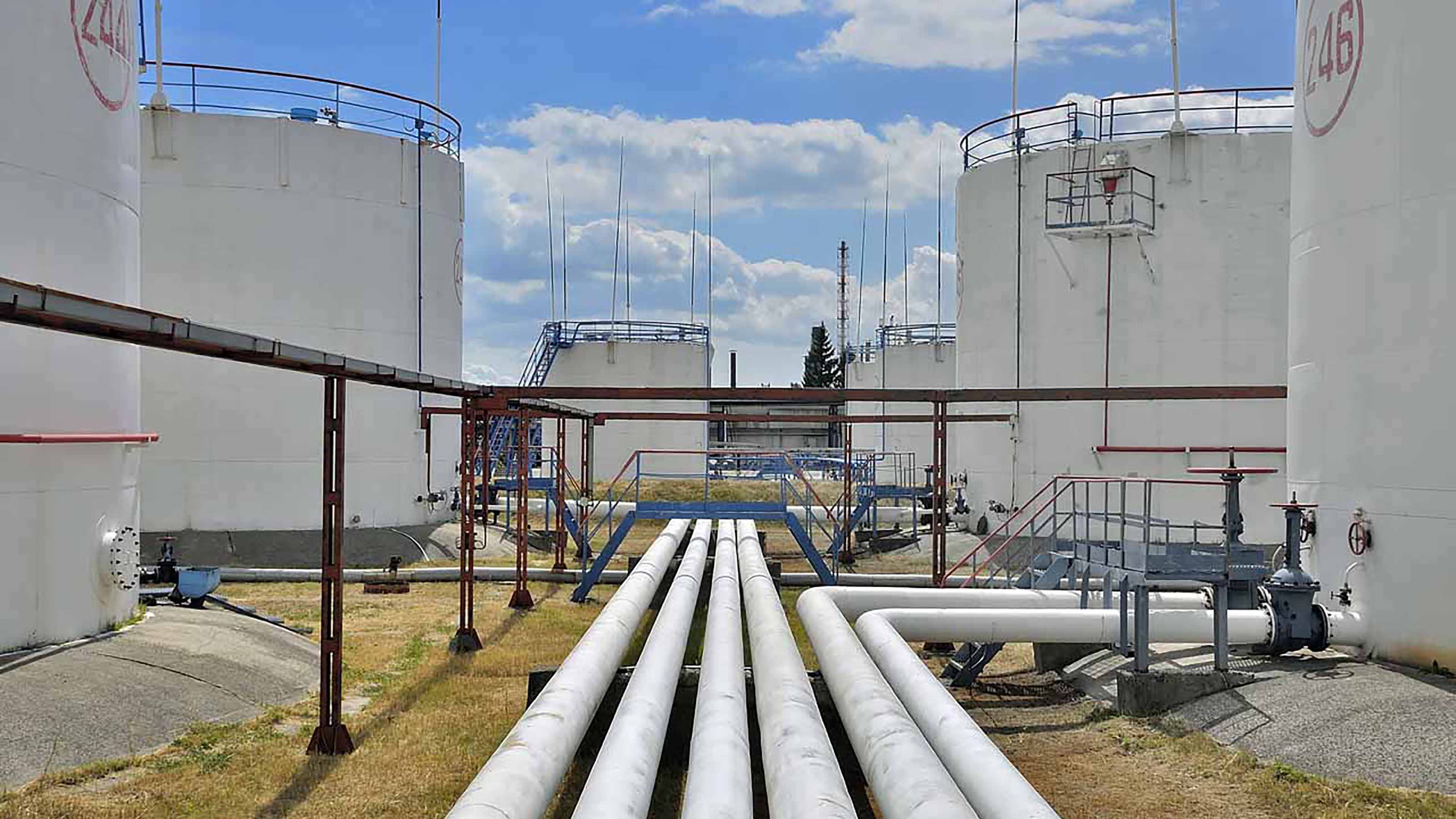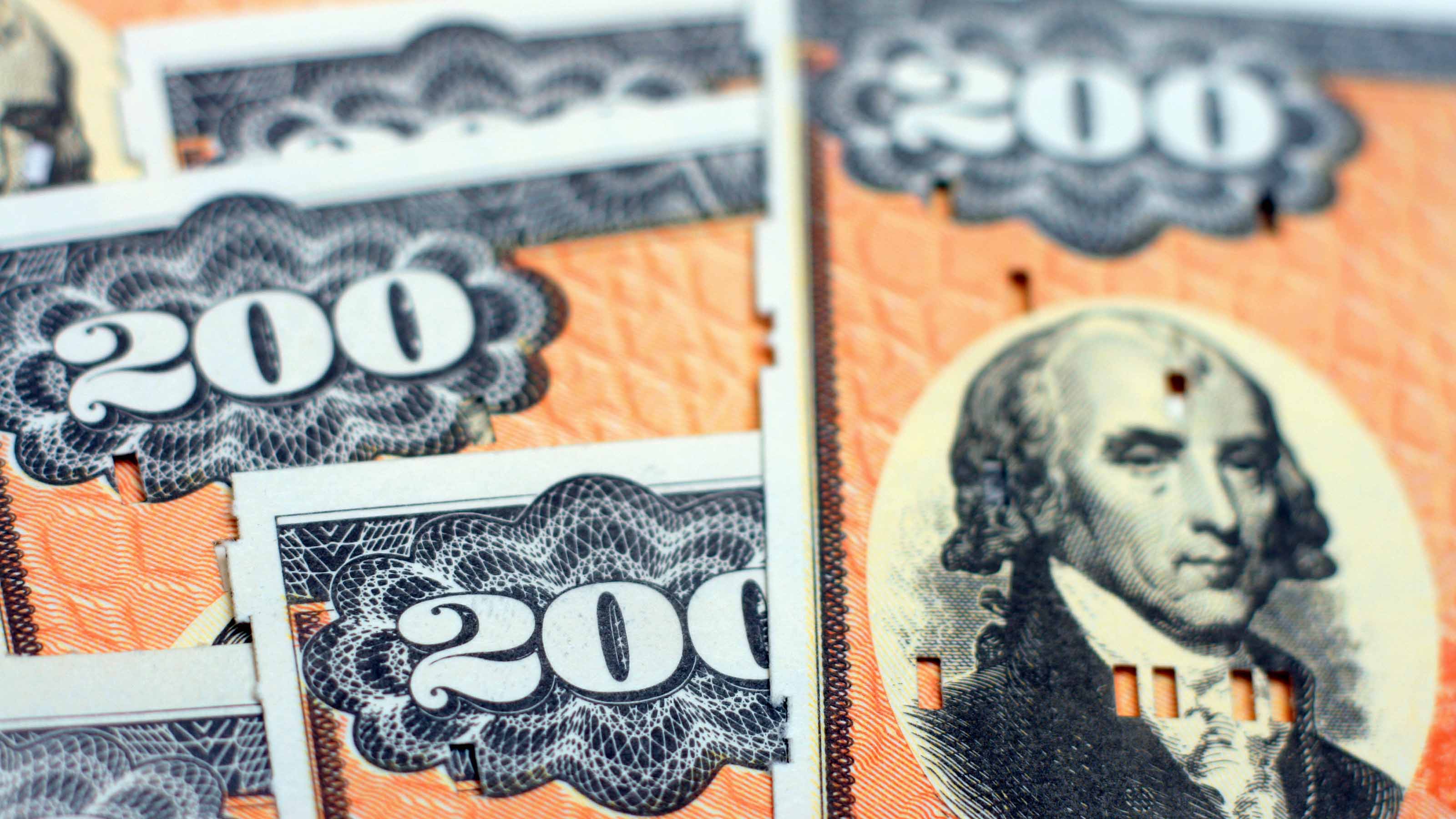10 Income Investments Serving Up Superior Yields
Respectable yields are scarce nowadays. But these 10 income investments, spanning several types of special classes, offer up to 10.3% annually.


If you're looking for income investments in 2021, best of luck. While bond yields are bouncing back, the 10-year still yields a paltry 1.6%, and the S&P 500 yields even less.
If you need a far greater yield than that from the income portion of your investment portfolio, you might consider investing in pass-through securities. These are defined as securities that pass through a majority of their capital gains and investment income.
Four major types of pass-through securities include closed-end funds (CEFs), real estate investment trusts (REITs), business development companies (BDCs), and master limited partnerships (MLPs).
Let's take CEFs, for example. According to BlackRock, the average yield for CEFs in the fourth quarter of 2020 was 7.8% and 11.5% based on net asset value (NAV) and market price, respectively. That's not just better than the S&P 500 and 10-year T-notes – that's better than almost anything else you can find on the market. The same is generally true for the other pass-through security types.
If you're willing to look beyond Wall Street's best-traveled areas of yield, read on as we discuss 10 income investments that stand out among the most interesting opportunities.
Disclaimer
Data is as of March 15. Dividend yields are calculated by annualizing the most recent payout and dividing by the share price.

Ares Capital Corporation
- Market value: $8.3 billion
- Dividend yield: 8.5%
The first of two business development companies (BDCs), Ares Capital Corporation (ARCC, $18.88), is one of the largest direct lenders in the U.S. It looks for companies with stable cash flow, a large moat, growth prospects and a seasoned management team.
Business development companies are income investments that provide funding to small and midsized businesses. In this case, Ares Capital provides all kinds of loans, including lines of credit, first and second liens and subordinated loans. It also makes non-control equity investments, although those represent just 15% of its $15.5 billion portfolio.
The portfolio of loans and equity has been made to more than 350 companies backed by 172 different private equity firms.
If you want to know who the players are in middle-market private equity, all you need to do is look through a list of Ares' investments. You'll quickly see who owns what.
Since its IPO in October 2004, Ares Capital has invested approximately $63 billion in middle-market lending across more than 1,400 transactions, generating a realized asset level gross internal rate of return (IRR) of 14%. It also has generated a total cumulative return since its IPO that's 50% higher than the S&P 500.
It is externally managed by Ares Management (ARES), which manages more than $197 billion in assets under management, including $146 billion from direct lending and other credit-related investment strategies.
ARCC might not make you rich overnight. But it should be a worthwhile income investment, providing high and stable yield over the long haul.

Bain Capital Specialty Finance
- Market value: $986.5 million
- Dividend yield: 8.9%
Bain Capital Specialty Finance (BCSF, $15.28) is another BDC, this one externally managed by BCSF Advisors LP, a subsidiary of Bain Capital. U.S. senator and one-time presidential candidate Mitt Romney launched the alternative asset manager in 1984 after rising the ranks at the consultant Bain & Company, which provided seed money. (Romney left in 1999.)
BCSF commenced operations in October 2016. It went public two years later, in November 2018, raising $152 million in its initial public offering. Since its 2016 launch, the BDC has grown total assets to $2.60 billion, and total net assets to $1.07 billion.
A majority of the BDC's investment portfolio is dedicated to first lien senior secured loans, which accounted for 87% of its $2.5 billion in fair value at the end of 2020. BCSF generated $183 million in interest from its investments, along with $9.3 million in dividend income and $2.1 million from other income-producing securities.
The BDC continues to strengthen its balance sheet while delivering strong earnings for shareholders. The weighted average yield during Q4 at fair value was 7.5%, 20 basis points higher than in the third quarter. The BDC's outstanding debt had a weighted average interest rate of 3.2%, providing an attractive 430-basis-point spread between what it brings in and what it pays out.
Looking forward, BCSF announced in February a strategic partnership with London-based asset manager Pantheon to provide direct lending to middle-market companies in Europe and Australia, which should deliver greater global capabilities. Bain Capital is contributing $320 million in senior secured loans to the joint venture, and it will own 70.5% of the joint venture. Pantheon will hold the rest.

Arbor Realty Trust
- Market value: $2.1 billion
- Dividend yield: 7.8%
The first of two real estate investment trusts, Arbor Realty Trust (ABR, $16.91), provides mortgages for owners of multifamily and commercial real estate assets. This mortgage REIT (mREIT), which got its start in 2003, operates two businesses: Structured Loan Origination and Investments, and Agency Loan Origination and Servicing.
Arbor's structured business invests in a portfolio of bridge and mezzanine loans for multifamily, single-family rental and commercial real estate. It also invests in actual real estate and real estate-related notes and other securities. The agency business originates and services multifamily loans for third parties such as Federal National Mortgage Association (Fannie Mae) and Federal Home Loan Mortgage Corporation (Freddie Mac) and several other federal government housing agencies.
In its most recent quarterly report, Arbor announced that its agency business had grown by 23% in 2020, to $24.6 billion. That included record Q4 loan originations of $2.75 billion, up 87% year-over-year.
As for the REIT's structured business, its loan portfolio is now nearly $5.5 billion, almost 28% higher year-over-year.
"Arbor continues to be very well positioned to succeed in the current economic climate. Our business model gives us diversified opportunities for growth and has allowed us to outperform in the commercial mortgage REIT space," says Ivan Kaufman, CEO of Arbor Realty Trust.
Dividend growth is an important aspect of income investments, and Arbor is getting back on track on that front. ABR, which had been increasing its dividend quarterly until the pandemic hit, has started a new streak, recording three consecutive quarters of higher payouts. The latest upgrade was by a penny per share to 33 cents quarterly. Arbor's annual payment of $1.32 yields nearly 8%.

Digital Realty Trust
- Market value: $38.0 billion
- Dividend yield: 3.4%
Of the 10 income investments discussed in this article, datacenter REIT Digital Realty Trust (DLR, $135.07) leans the most on capital appreciation as opposed to income.
Over the past five years, the office and data center REIT delivered an annualized total return of 12.4%, more than double its peers. Of that, more than 3 percentage points was from dividends. While Digital Realty Trust's yield might not draw a crowd from income investors, its 15-year dividend growth streak should.
With the cloud and digitalization continuing to grow, data centers should continue to be in significant demand for the foreseeable future. DLR finished the fourth quarter ended Dec. 31, 2020, with 291 data centers and 35.9 million square feet of space available on six continents, including North America. It also has 5.4 million square feet under active development and another 2.3 million square feet for future expansion.
In fiscal 2021, it expects revenues of at least $4.25 billion with adjusted EBITDA (earnings before interest, taxes, depreciation and amortization) of at least $2.3 billion. That translates to "core" funds from operations (FFO, an important REIT profitability metric) of $6.45 per share at the midpoint. That's a 9% year-over-year revenue increase and a 4% increase in core FFO.
In the fourth quarter alone, Digital Realty signed new leases for 972,507 square feet worth $130.3 million on an annualized basis and $122 in base rent per square foot.
With a total debt of just $13.4 billion or 34% of its market cap, DLR remains a solid play for long-term income investors.

Delek Logistics Partners LP
- Market value: $1.6 billion
- Distribution yield: 9.8%*
It's hard to imagine an energy-related income investment doing well over the past few years. Nonetheless, Tennessee-based master limited partnership (MLP) Delek Logistics Partners LP (DKL, $37.24) has delivered a five-year annualized total return of 12.7%, well more than twice the return of its midstream peers.
DKL was spun out from Delek US Holdings (DK) in November 2012. At the time, DK owned 66% of its units (shares of an MLP). Today, it owns 80% of the limited partnership.
According to its December 2020 presentation, Delek Logistics transports crude oil across more than 805 miles of pipeline. It also has storage capacity of more than 10 million barrels of oil. In addition to that, DKL owns a rail offloading facility and a wholesale marketing business that sells refined products from independent third parties and Delek U.S. refining operations.
In the company's most recently reported quarter, it earned 94 cents per unit of net income attributable to all partners, up from 52 cents per unit in the year-ago quarter. Distributable cash flow (DCF, an important metric that speaks to the sustainability of MLP distributions) was $55.9 million, from $33.0 million in Q4 2019. That gives the firm a DCF coverage ratio of 1.41x – much better than the 1.08x in the year-ago quarter – implying a much more secure distribution.
In a challenging operating environment, DKL continues to deliver the goods.

Guggenheim Strategic Opportunity Fund
- Assets under management: $964.0 million
- Distribution rate: 10.3%*
- Expenses: 1.75%**
Closed-end funds (CEFs), unlike open-ended mutual funds, trade on an exchange, and do so at a limited number of shares outstanding. As a result, they can trade at a discount or premium to the net asset value of the fund's assets, depending on investor interest and other factors.
CEFs also tend to offer up large distributions, so we'll cover three of them here. First up is Guggenheim Strategic Opportunity Fund (GOF, $21.08), which seeks to maximize returns utilizing both quantitative and qualitative analysis to find investments that are trading below their fair value.
GOF can invest up to 20% of its total assets in non-U.S. dollar-denominated fixed-income securities, up to 50% of its assets in common stocks, and up to 30% in investment funds that invest in securities GOF already owns directly. Lastly, it can invest as much as it wants in junk bonds.
The CEF uses leverage to enhance its returns beyond what an unleveraged fund might achieve. Leveraging does add an element of risk to the fund by increasing the potential losses. At present, the fund's leverage is 37.7% or $363 million of its $964 million in total assets.
Since its inception in July 2007, GOF has achieved an annualized total return of 11.6% through Dec. 31, 2020. Over the past year, it has earned a total return of roughly 47%.
The CEF pays a monthly distribution of 18.21 cents per share. On an annualized basis, that yields more than 10%.
The only downside of buying GOF right now is its significant premium. It currently trades at a 20% premium to its NAV, which is more than double its five-year average premium of 8.1%.
* Distributions can be a combination of dividends, interest income, realized capital gains and return of capital.
** Includes interest expenses.

Invesco Dynamic Credit Opportunities Fund
- Assets under management: $702.9 million
- Distribution Rate: 8.1%
- Expenses: 3.59%*
The Invesco Dynamic Credit Opportunities Fund (VTA, $11.16) invests in corporate variable-rate and fixed-rate loans made to businesses across many sectors, industries and geographic regions.
Its primary goal is to provide a high level of income to investors, with capital appreciation being a secondary consideration.
Of the fund's 536 bond holdings, the vast majority are non-investment-grade, or "junk." However, the fund's Senior Portfolio Manager, Scott Baskind, is head of Invesco's Global Private Credit business and has been with Invesco since 1999. His experience with corporate loans dates back to the mid-1990s. In other words, VTA is being run by someone who knows how to select opportunities in the junk-bond market.
Like GOF, Invesco's fund is allowed to use leverage to enhance returns. At the end of December 2020, it had 29% leverage and $201 million outstanding.
Dynamic Credit Opportunities' top 20 weightings accounted for 27.5% of its total portfolio at last check. The average loan in its portfolio was $2.6 million.
VTA pays a monthly distribution rate of 7.5 cents per share, which annualizes to an 8%-plus yield. It currently trades at a 7.7% discount to NAV, but that's still a little narrower than its five-year average discount of closer to 11%.
* Includes interest expenses.

BlackRock Multi-Sector Income Trust
- Assets under management: $673.8 million
- Distribution rate: 8.3%
- Expenses: 2.36%*
The final of three CEFs is the BlackRock Multi-Sector Income Trust (BIT, $17.95). It invests at least 80% of its assets in loans and debt instruments or through synthetic derivatives to generate above-average current income and future capital appreciation.
Since its inception in February 2013, BIT has achieved an annual total return of 7.6% through Dec. 31, 2020, 119 basis points less than its NAV return over the same period.
Its portfolio contains nearly 2,300 holdings. The U.S. represents 77% of its assets, while China, the United Kingdom, and Canada are weighted slightly above 2%. France, Luxembourg, Mexico and others round out its geographic representation.
Like the other two CEFs, BIT uses leverage. It currently uses roughly 34% leverage, or $351.1 million outstanding. The typical loan's principal is repaid after 10.2 years.
And like VTA, BIT also owns a lot of non-investment-grade debt. But a higher percentage of its portfolio (~30%, versus ~7% for VTA) is in BB-rated debt or higher (investment-grade).
You can buy BIT's assets at a small 2.7% discount to NAV at the moment – not bad, but a smaller discount than its five-year average of 8.9%.
* Includes interest expenses.

Global X US Preferred ETF
- Assets under management: $1.4 billion
- SEC yield: 5.1%
- Expenses: 0.23%
As its name suggests, the Global X US Preferred ETF (PFFD, $25.41) invests in a basket of preferred stocks. PFFD tracks the performance of the ICE BofAML Diversified Core U.S. Preferred Securities Index.
The index invests in several preferred stock categories, including floating-rate, variable-rate, and fixed-rate preferreds, cumulative and non-cumulative preferreds, and trust preferreds. All securities included in the index must be listed on a U.S. stock exchange.
Investors often avoid preferred shares because they're considered hybrid securities, neither equity nor debt instrument. However, they can play a useful role for anyone looking to generate income from their investment portfolio.
PFFD provides investors with a higher yield than you might get from traditional dividend-paying stocks while doing so monthly. Equally important, it charges annual expenses that are less than many of its competitors.
Since its inception in September 2017, Global X US Preferred has delivered an annualized total return of 6.9%. It might not be the sexiest investment out there, but it has managed to attract more than $1.4 billion from investors, which says it has more going for it than meets the eye.
Its 290 holdings include preferreds issued by Bank of America (BAC), Danaher (DHR) and NextEra Energy (NEE).

GraniteShares HIPS US High Income ETF
- Assets under management: $34.3 million
- Dividend yield: 9.2%
- Expenses: 3.19%*
The GraniteShares HIPS US High Income ETF (HIPS, $14.76) is one of the most expensive income investments on this list at 3.19% in annual expenses. But it's important to note that if you invested in each of its 61 holdings individually, you'd still be eating most of those same fees.
HIPS, which stands for "high-income pass-through securities," seeks to track the performance of the TFMS HIPS Index, which invests in … well, high-income securities with pass-through structures.
With HIPS, you leave the investment selection to the index provider. It selects the 15 securities with the highest yields and lowest volatility from all four high-income categories: MLPs, REITs, BDCs and CEFs. All of the securities are equally weighted. It then adjusts the weight of each sector to limit volatility. Each of the four must have at least a 15% weighting; the MLPs cannot exceed 25%.
The index is reconstituted once a year. It rebalances if the MLP weighting at the end of a quarter exceeds 25%. Currently, CEFs account for slightly more than 55% of HIPS's assets. BDCs, REITs and MLPs were each around 15%.
HIPS has maintained a 10.75-cent monthly distribution per unit since inception. And a nice bonus: the ETF doesn't generate a K-1 tax form – something you'd have to deal with if you individually owned any of the partnerships it holds.
* Includes acquired fund fees and other expenses
Get Kiplinger Today newsletter — free
Profit and prosper with the best of Kiplinger's advice on investing, taxes, retirement, personal finance and much more. Delivered daily. Enter your email in the box and click Sign Me Up.

Will has written professionally for investment and finance publications in both the U.S. and Canada since 2004. A native of Toronto, Canada, his sole objective is to help people become better and more informed investors. Fascinated by how companies make money, he's a keen student of business history. Married and now living in Halifax, Nova Scotia, he's also got an interest in equity and debt crowdfunding.
-
 The AI Doctor Coming to Read Your Test Results
The AI Doctor Coming to Read Your Test ResultsThe Kiplinger Letter There’s big opportunity for AI tools that analyze CAT scans, MRIs and other medical images. But there are also big challenges that human clinicians and tech companies will have to overcome.
By John Miley Published
-
 The Best Places for LGBTQ People to Retire Abroad
The Best Places for LGBTQ People to Retire AbroadLGBTQ people can safely retire abroad, but they must know a country’s laws and level of support — going beyond the usual retirement considerations.
By Drew Limsky Published
-
 Stock Market Today: Stocks Surge to Close a Volatile Week
Stock Market Today: Stocks Surge to Close a Volatile WeekIt was another day with a week's worth of both news and price action, but it ended on a strongly positive note.
By David Dittman Published
-
 Stock Market Today: Uncertainty Proliferates: Dow Loses 1,014 Points
Stock Market Today: Uncertainty Proliferates: Dow Loses 1,014 PointsWeaker-than-expected consumer inflation data wasn't enough to stabilize sentiment during another volatile day for financial markets.
By David Dittman Published
-
 Stock Market Today: Tariff Pause Triggers 3,000-Point Dow Rally
Stock Market Today: Tariff Pause Triggers 3,000-Point Dow RallyThe bond market is sending concerning signals as the Trump administration executes its rapid reordering of global trade relationships.
By David Dittman Published
-
 Stock Market Today: Tariff Talks Drive Another Up-and-Down Day
Stock Market Today: Tariff Talks Drive Another Up-and-Down DayTrade war negotiations are happening, but the "fear gauge" is gyrating, and investors, traders and speculators are still searching for signs of a bottom.
By David Dittman Published
-
 Stock Market Today: Trump Pushes Dow Into 2,600-Point Swing
Stock Market Today: Trump Pushes Dow Into 2,600-Point SwingTariffs and trade war weigh on prices across global financial markets, with little light at the end of the tunnel.
By David Dittman Published
-
 Stock Market Today: Dow Drops Another 2,231 Points to Hit a Correction
Stock Market Today: Dow Drops Another 2,231 Points to Hit a CorrectionThe Nasdaq Composite, meanwhile, entered a new bear market with its latest slide.
By Karee Venema Published
-
 Stock Market Today: Dow Dives 1,679 Points on Trump Tariff Shock
Stock Market Today: Dow Dives 1,679 Points on Trump Tariff ShockU.S. stocks lost roughly $3.1 trillion in market cap on Thursday – the biggest one-day decline since the start of the COVID-19 pandemic in March 2020.
By Karee Venema Published
-
 Stock Market Today: It's the Old Up-Down Again on Liberation Day
Stock Market Today: It's the Old Up-Down Again on Liberation DayMarkets look forward to what comes with the reordering of 80-year-old global trade relationships.
By David Dittman Published
